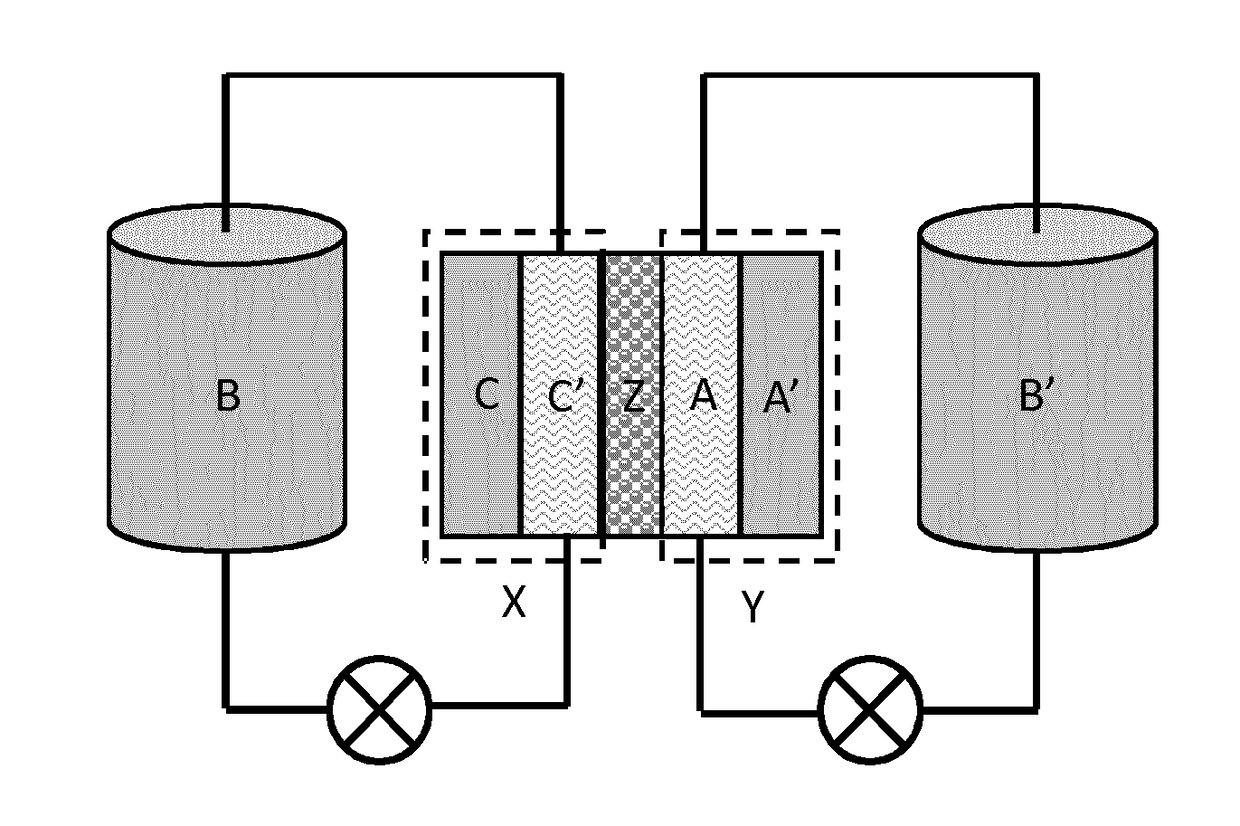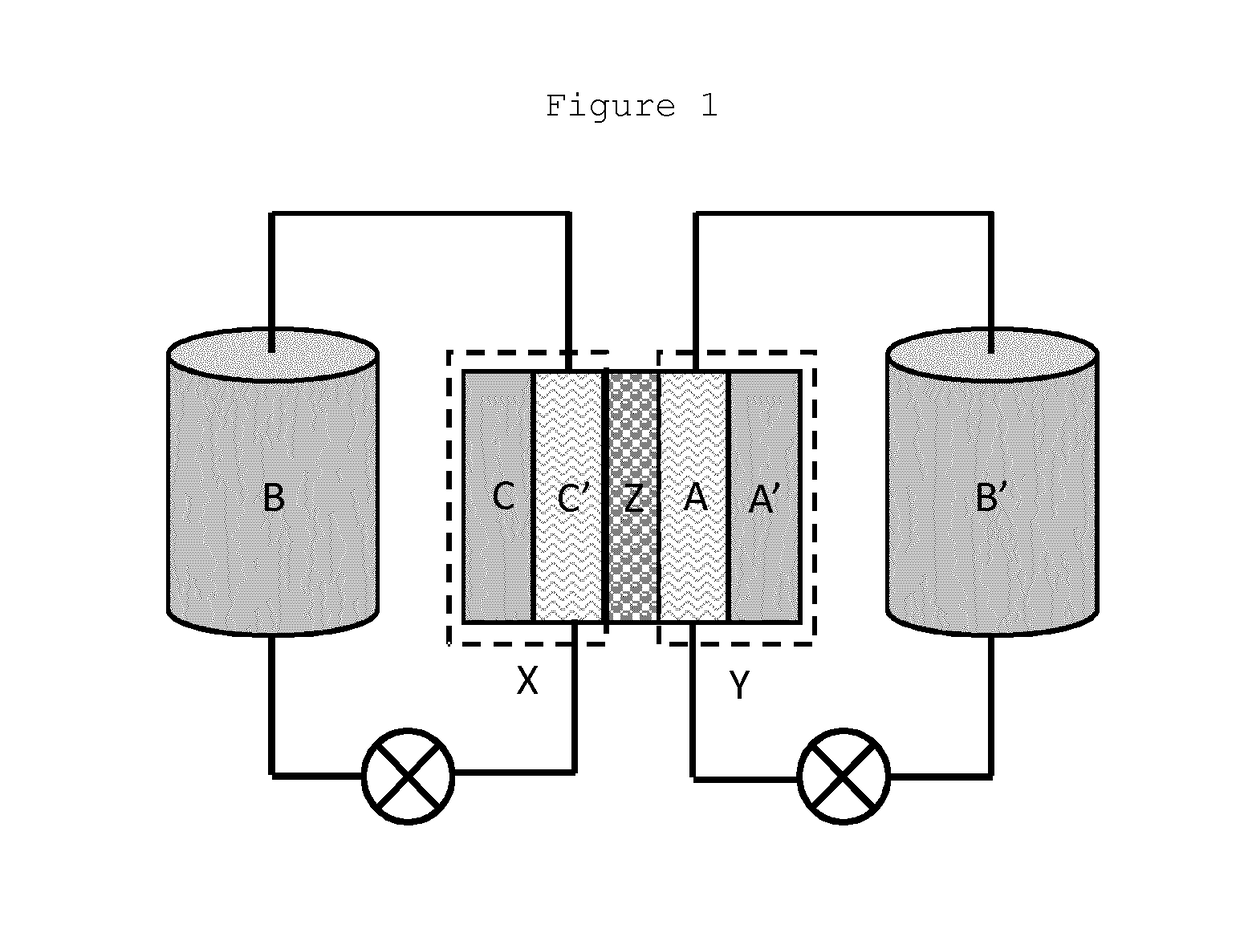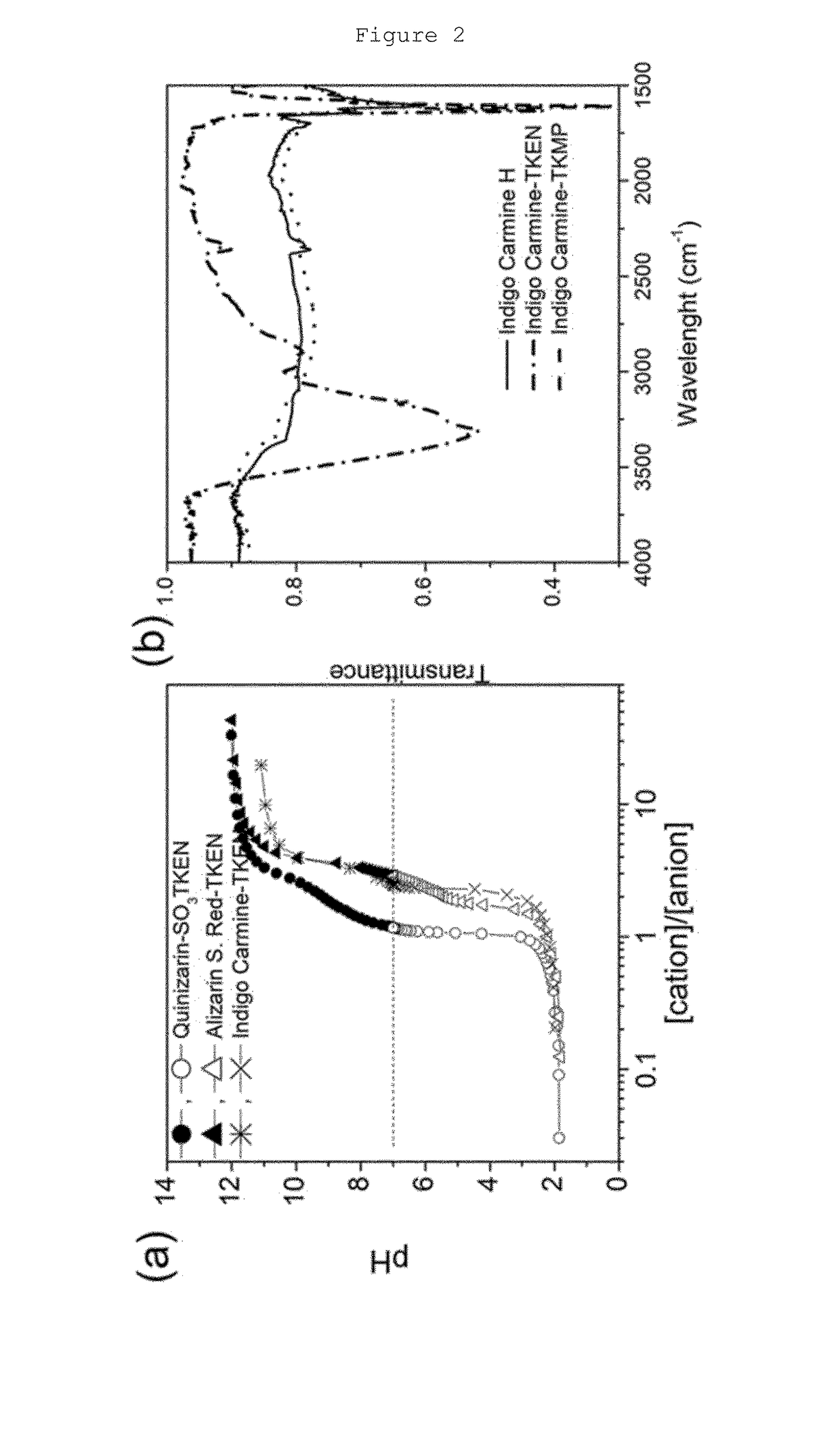Organic electrolyte compounds for redox-flow batteries
a technology of organic electrolyte compounds and redox-flow batteries, which is applied in the direction of electrochemical generators, fuel cells, electrical equipment, etc., can solve the problems of reducing the life-time of redox-flow batteries, affecting the efficiency of redox-flow batteries, so as to reduce the price of the system, less corrosive media, and energy-saving
- Summary
- Abstract
- Description
- Claims
- Application Information
AI Technical Summary
Benefits of technology
Problems solved by technology
Method used
Image
Examples
examples
Materials and Methods
[0100]Attenuated Total Reflectance-Fourier Transform InfraRed (ATR-FTIR) spectra were recorded on Vertex 70 spectrometer (Bruker) in the range of wavelength of 4000-400 cm−1. Differential Scanning Calorimetry measurements (DSC) were carried out on a TA Instruments Q2000 model in a sealed Al pan at a heating rate of 5° C. min−1 in the temperature range between −80° C. and 100° C. The cyclic voltammetry measurements were performed in a cavity micro-electrode (CME) with an electrochemical interface area around a fraction of mm2 and ohmic drop coming from the bulk of the electrolyte that can be neglected, allowing the use of high scan rates [C. Cachet-Vivier et al.; Electrochim. Acta 47, 181-189 (2001)]. The samples were studied electrochemically by using a three-electrode configuration cell in DI-H2O and the different supporting electrolytes with a platinum wire as counter electrode and Ag / AgCl or Hg / HgO as reference electrode depending of the acidic or basic pH of...
preparation of examples 1-6
Example 1
Preparation of Sulphonated Acid Sodium Salt Derivates.
[0101]2 g (8.4 mmol) of commercial Quinizarin (Sigma-Aldrich) was treated with sodium sulphite (Na2SO3, 5 g, 40 mmol), and copper oxide (CuO, 1 g, 12 mmol) under reflux with water for 24 hours according to the procedure disclosed in P. G. Marshall, J. Chem. Soc. 3206-3208 (1931). The solution was acidified with diluted sulphuric acid (H2SO4) and filtered while boiling. A small amount of NaCl was added to the filtered portion. After cooling, the sulphonated organic sodium salt was extracted by centrifugation (15 min, 10000 rpm) as a mixture of orange-red needles and plates. The solid sulphonated organic sodium salt was dried under vacuum at 70° C. for 48 hours. The resulting compound is 1,4-dihydroxy-9,10-dioxo-2-anthracenesulfonic acid sodium salt, also referred to as Quinizarin-SO3Na.
[0102]Sulphonated acid sodium salt derivatives of Alizarin and Indigo, respectively named Alizarin S. Red-SO3Na(3,4-dihydroxy-9,10-dioxo-2...
example 2
Hydrogen Ion-Exchange of Sulphonated Acid Sodium Salt Derivates.
[0103]The sulphonated organic sodium salts obtained in Example 1 were flushed three times through a column containing the resin Amberlyst® 15 hydrogen form (Sigma-Aldrich) to convert them into their protonic acid analogs. Amberlyst® resin was pre-conditioned by passing first a 250 ml of 0.1 M H2SO4 and secondly Deionized—H2O (DI-H2O) (˜250 ml) until the pH of the solution from the outlet of the column was 7. After that, 100 ml of an aqueous solution containing ˜1 gram of sodium salt was introduced into the column. The whole process (conditioning +DI washing+Na-salt passing) was repeated. Then, the solvent was removed under reduced pressure and the solid collected was dried under vacuum at 70° C. during 48 hours. The resulting compound is referred to as Quinizarin-SO3H.
[0104]Sodium ions were removed also from sulphonated acid sodium salt derivatives of commercial Alizarin and Indigo following the same procedure as above,...
PUM
 Login to View More
Login to View More Abstract
Description
Claims
Application Information
 Login to View More
Login to View More - R&D
- Intellectual Property
- Life Sciences
- Materials
- Tech Scout
- Unparalleled Data Quality
- Higher Quality Content
- 60% Fewer Hallucinations
Browse by: Latest US Patents, China's latest patents, Technical Efficacy Thesaurus, Application Domain, Technology Topic, Popular Technical Reports.
© 2025 PatSnap. All rights reserved.Legal|Privacy policy|Modern Slavery Act Transparency Statement|Sitemap|About US| Contact US: help@patsnap.com



